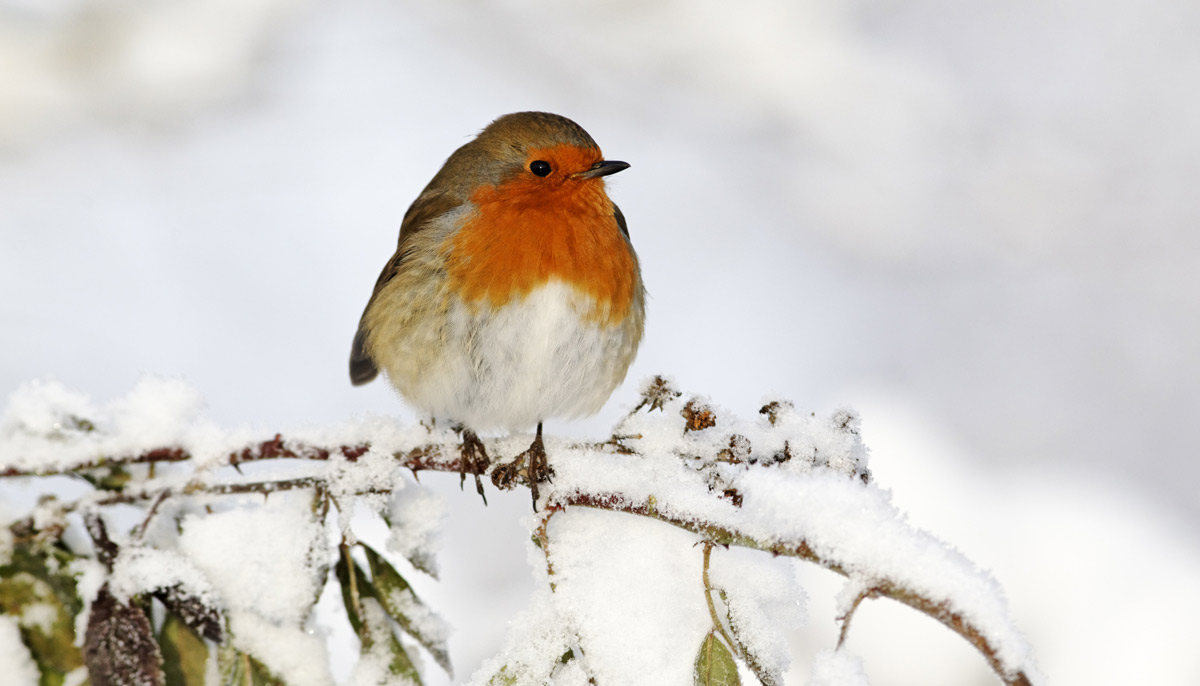Robins
Singing on high
Published on: 20 December 2018
Robins drop the low notes in the presence of wind turbines
They are Britain’s best loved bird – as synonymous with Christmas as puddings and snow. And despite their slightly comical appearance, these feisty songbirds are well-known for their aggressive and territorial nature.
Deepening their voices in the presence of an intruder, Robins use low-frequency songs in a possible attempt to make them sound bigger and more threatening.
But, says Mark Whittingham, Professor of Applied Ecology at Newcastle University, these brave little birds are no match for man and in the presence of the noise from wind turbines they do not rely on their lower pitched vocals and instead rely on other behaviour, such as their trademark red breast, to ward off intruders.

Robin's deepen their voice to imply a bigger size
“Without background noise, the Robins literally deepen their voices when defending their territory – perhaps implying a bigger body size with a deeper voice,” explains Professor Whittingham, who together with his team have been studying these iconic songbirds for the past three years.
“But in the presence of wind turbine noise this behaviour appears to be disrupted and unable to compete against the low hum of the blades and so they cease to use these low frequency elements of their vocalisations.
“One of the explanations for the deeper, aggressive call is that it’s a way of avoiding conflict. If the Robin can ward off the intruder by implying he’s a force to be reckoned with then it reduces the risk of injury and unnecessary expenditure of energy.
“If this response is disrupted, then it reduces the robins’ ability to defend its territory.”
Last remaining 'oases' of quiet
The study was part of an ongoing research project being carried out to look at the impact of human activity on the songs of some of our best-loved birds. Together with colleagues from Durham University, the team are currently researching the impact of climate change on the dawn chorus.
Most previous research has focussed on urban areas and the impact of noise from traffic and other human activity on our city birds.
But wind farms are often cited in quieter, rural oases and, says Professor Whittingham, it’s important we understand the impact these might have on a bird’s natural behaviour including the ability to establish and defend a territory.
Carrying out the research in Chopwell Woods, on the outskirts of Newcastle upon Tyne, the bird calls were studied between 06:00hrs-11:00hrs during April, the key breeding season.
Recording 911 songs from 24 robins, the team simulated a territorial intrusion of a male robin in the presence and absence of a wind turbine recording.
Analysing the recordings, they found a 25pc decrease in the use of low-frequency song elements with wind turbine noise in the background. The new research investigating the dawn chorus is building on these previous findings.
“There are two possible reasons why robins change their call in the presence of a loud, low noise such as a wind turbine,” explains Professor Whittingham.
“One is that, unable to compete against the noise, they switch to alternative defense behaviours such as visual cues and puffing out their red breast.
“The second is that they may be simply trying to find a way to be heard over the noise.”



